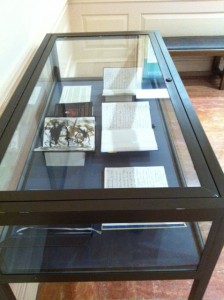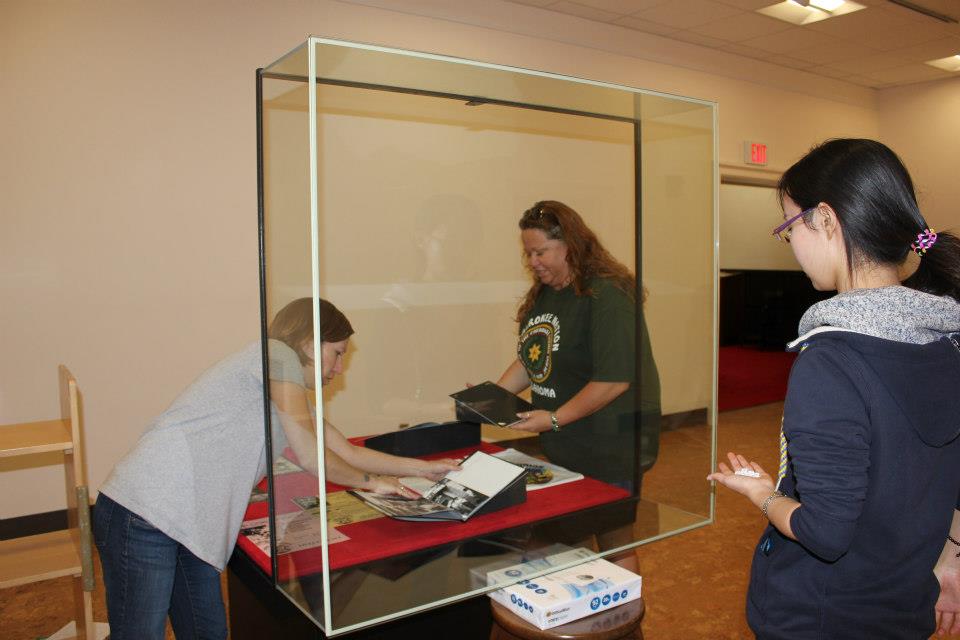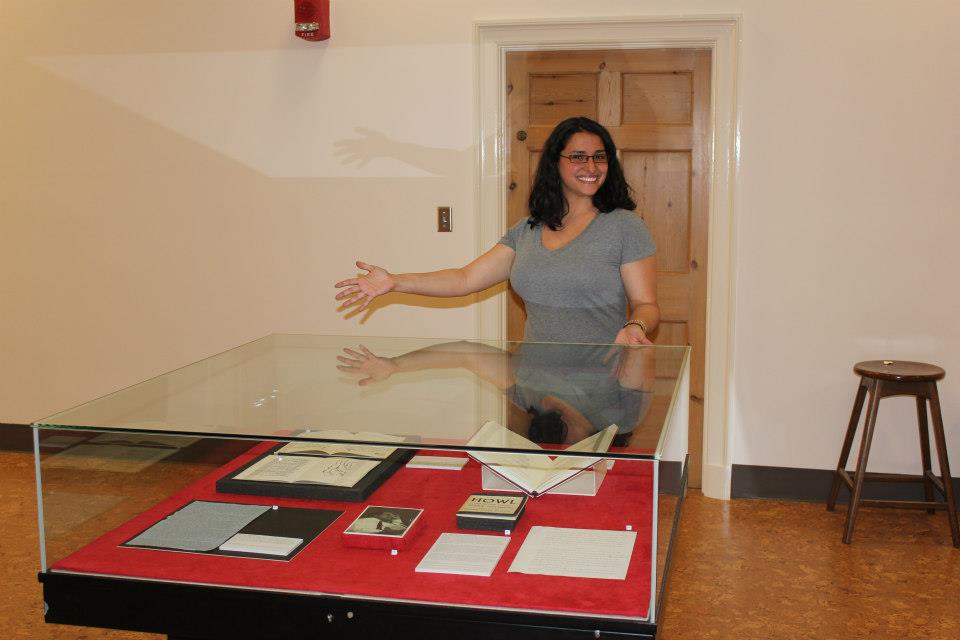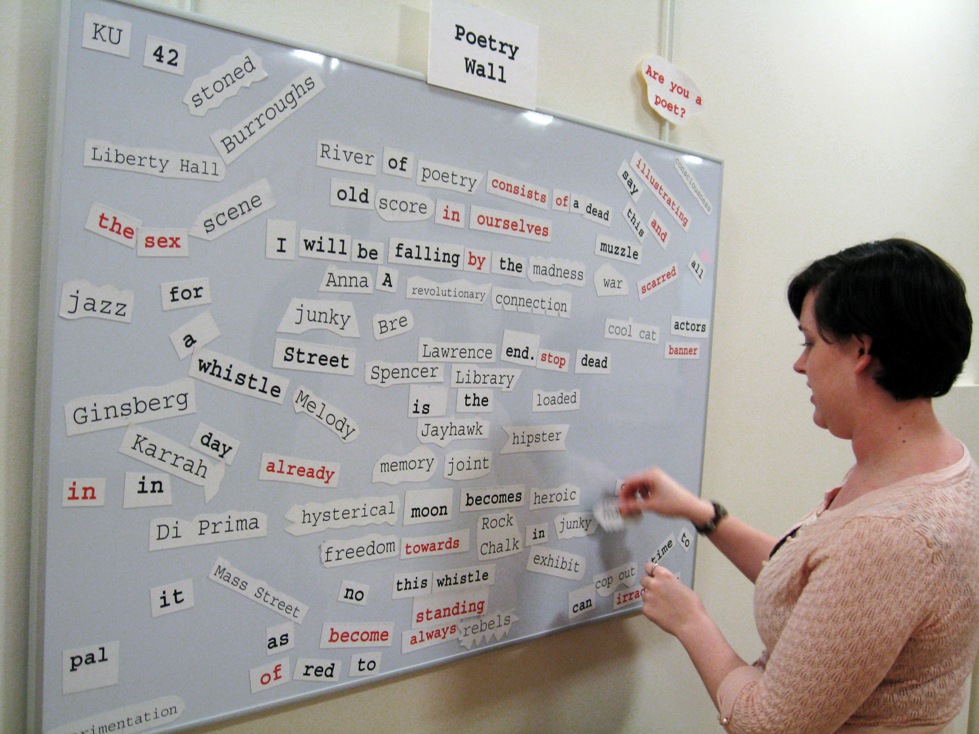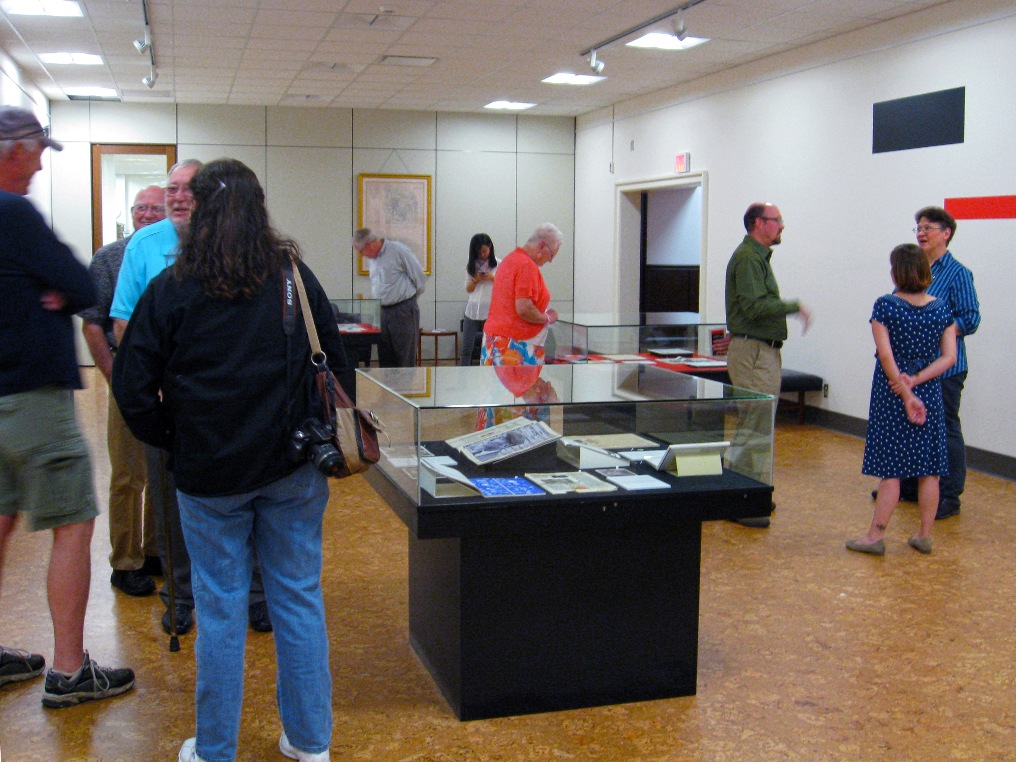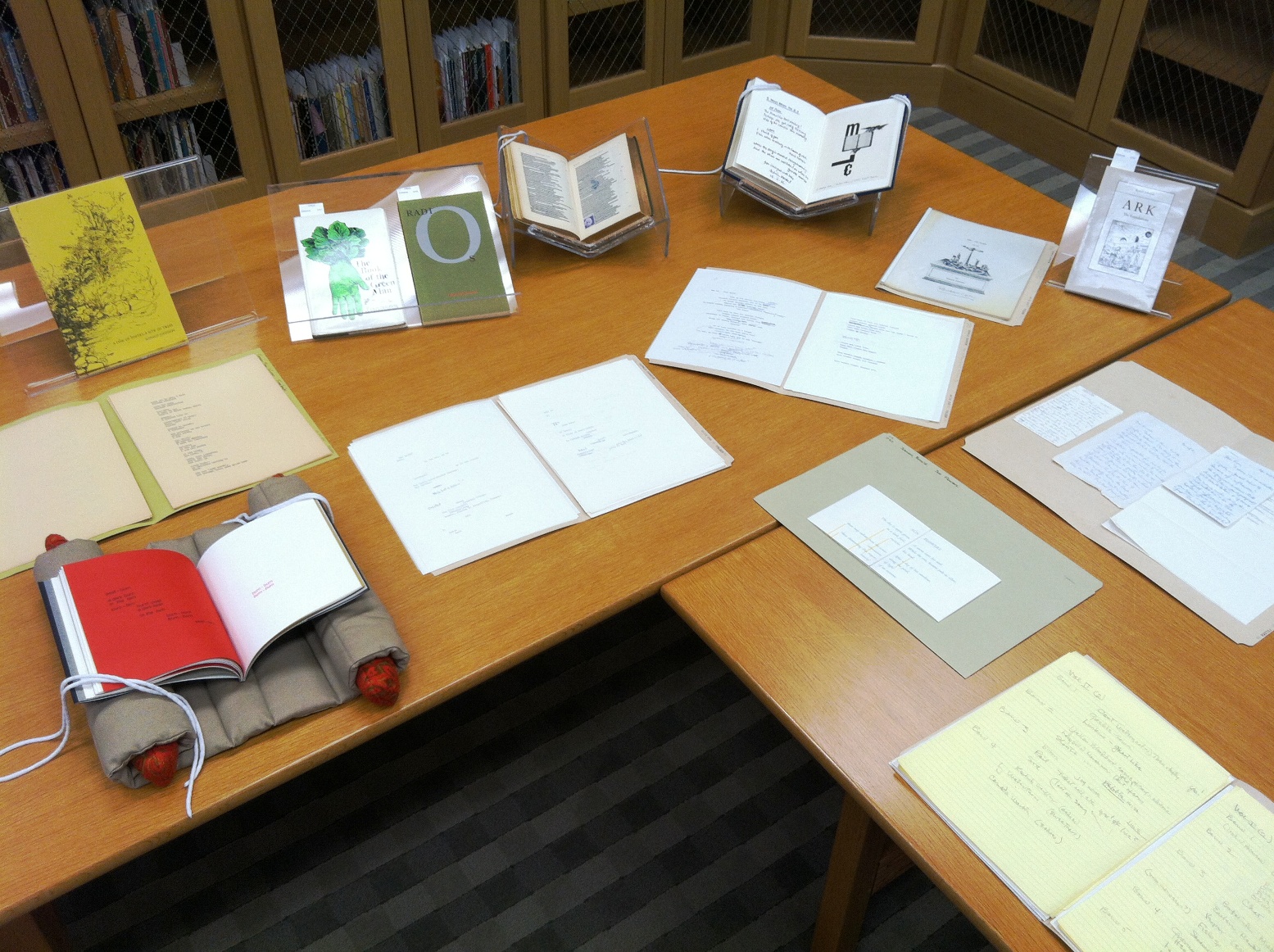Kansas Territory was opened for settlement in 1854, and women accompanied or joined their husbands and families and helped build new communities. These women’s stories survive through the letters and diaries they left behind, some of which have been preserved – and can be discovered – in Spencer’s Kansas Collection.

“Friendship” needlepoint fabric bookmark, originally between blank unnumbered leaves 218-219,
Thankful Sophia Mayo Journal, Call Number: RH MS P875. Click image to enlarge.
In November 1854, Elizabeth Mallory and her sister Jennie Crittenden left Wethersfield, Connecticut, and headed west to Kansas. They came as part of the sixth contingent of the Emigrant Aid Company, an organization dedicated to sending citizens with anti-slavery sentiments to the new Kansas Territory to ensure that it would not be admitted as a slave state. Elizabeth’s husband Anson H. Mallory had left with the first Company party in July and was waiting for the sisters in Lawrence.
Elizabeth and Jennie wrote to their mother and siblings from 1859 to the mid-1860s, and these letters give us a glimpse into their lives during Kansas’ earliest years. For example, the excerpt below is from a letter Elizabeth wrote to her mother on June 28, 1863, reassuring her that all was well. Abandoned by her husband Anson, Elizabeth had recently been granted a divorce. She resumed using her maiden name and signed her letters “ESC.” In 1857, sister Jennie had married George F. Earl, who came to Lawrence as a member of the Emigrant Aid Company and served as a Captain in Kansas Company A during the Civil War.
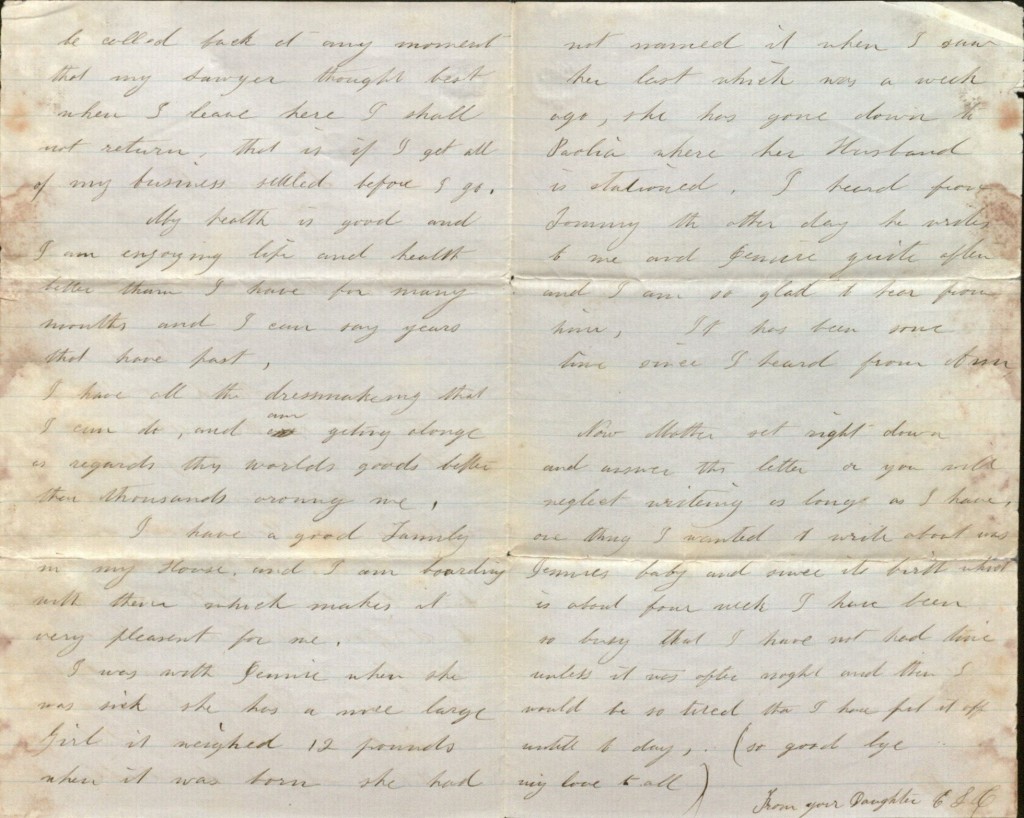
Second page of a letter, Elizabeth Crittenden to her mother, June 28, 1863,
Jennie Earl and Elizabeth S. C. Correspondence,
Call Number: RH MS P285. Click image to enlarge.
My health is good and I am enjoying life and health better than I have for many months and I can say years that have past, I have all the dressmaking that I can do, and am getting alonge as regards the worlds goods better then thousands [illegible] me, I have a good family in my House and I am boarding with them which makes it very pleasant for me. I was with Jennie when she was sick [giving birth] she has a nice large Girl. It weighed 12 pounds when it was born she had not named it when I saw her last which was a week ago, she has gone down to Paolia where her Husband is stationed.
Elizabeth survived Quantrill’s raid on Lawrence on August 21, 1863, and wrote to her brother about her experiences the next month.
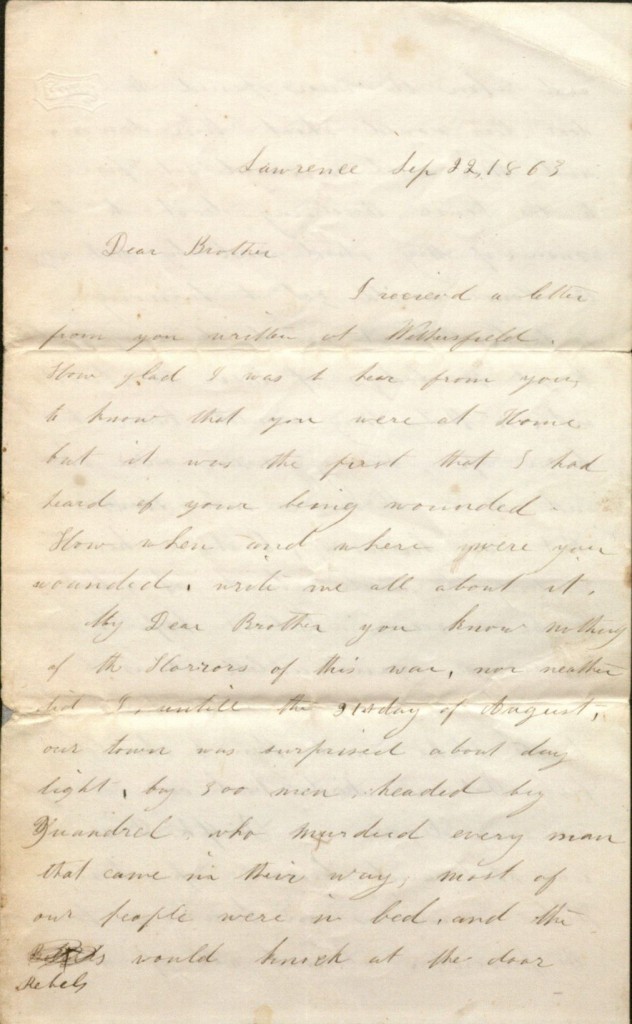
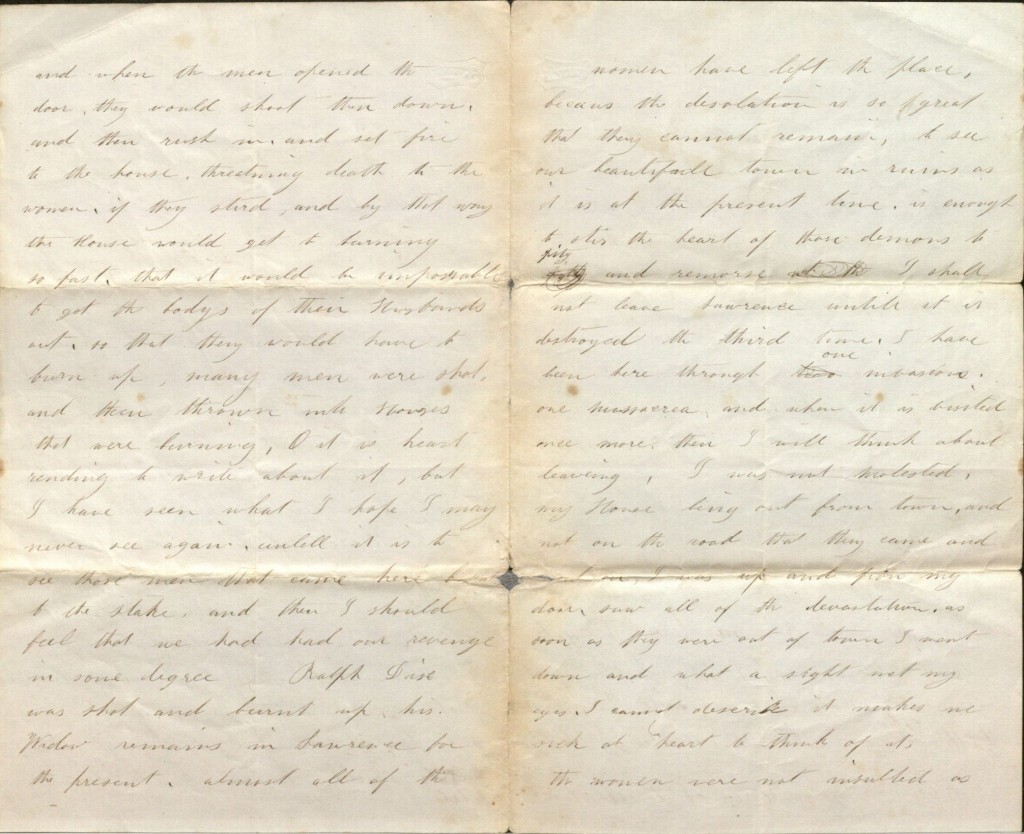
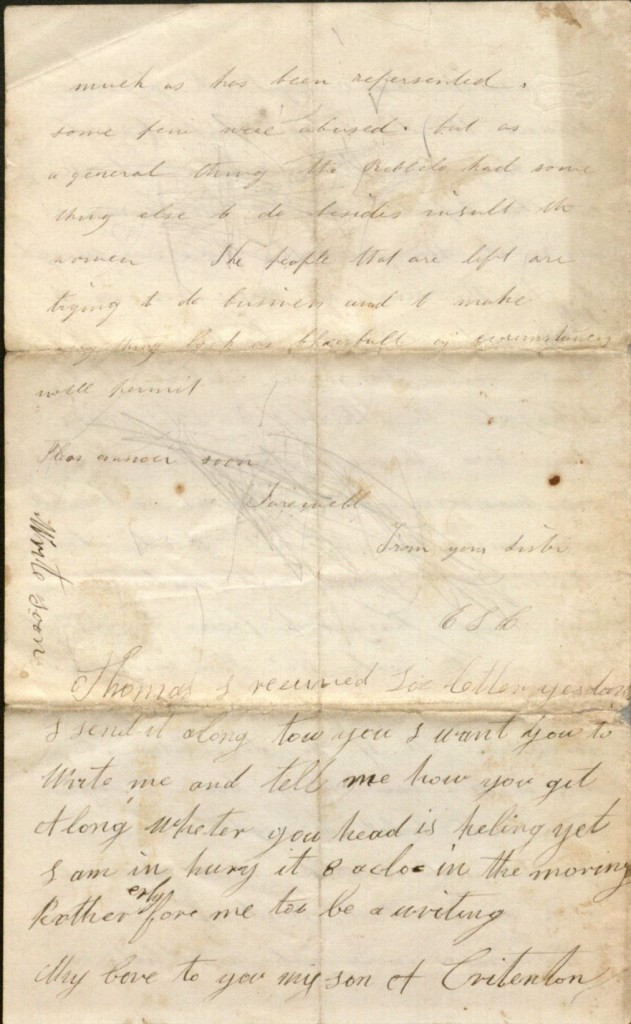
Letter, Elizabeth Crittenden to her brother, September 22, 1863,
Jennie Earl and Elizabeth S. C. Correspondence,
Call Number: RH MS P285. Click image to enlarge.
My dear Brother you know nothing of the Horrors of this war, nor neather did I, untill the 21st day of August, our town was surprised about day light, by 300 men headed by Quandrel who murdered every man that came in their way, most of our people were in bed, and the Rebels would knock at the door and when the men opened the door, they would shoot them down, and then rush in, and set fire to the house, threatening death to the women, if they stird, and by that way the House would get to burning so fast, that it would be impossable to get the bodys of their Husbands out, so that they would have to burn up.
Elizabeth also described the raid in a letter to her mother; this document is included in Spencer’s current exhibit about Quantrill’s Raid and can be accessed with a transcription as part of our accompanying online exhibit (see http://exhibits.lib.ku.edu/exhibits/show/quantrill/after/item/6144).
Another early Kansas woman, Sarah Goss Clark, left Pewaukee, Wisconsin, and moved to Kansas with her husband Lymon (Timothy Limon Clark) in 1864. Sarah’s brother Nathaniel was a noted ornithologist who helped found Neosho Falls in 1857. As is often the case regarding migrations, other family members eventually joined him in Kansas. The Sarah Goss Clark papers include her diaries from 1864 to 1874, correspondence with her mother and siblings, and other miscellaneous items. In her earliest diary, Sarah discusses many of her family members and the trials she faced during her first year in Kansas.
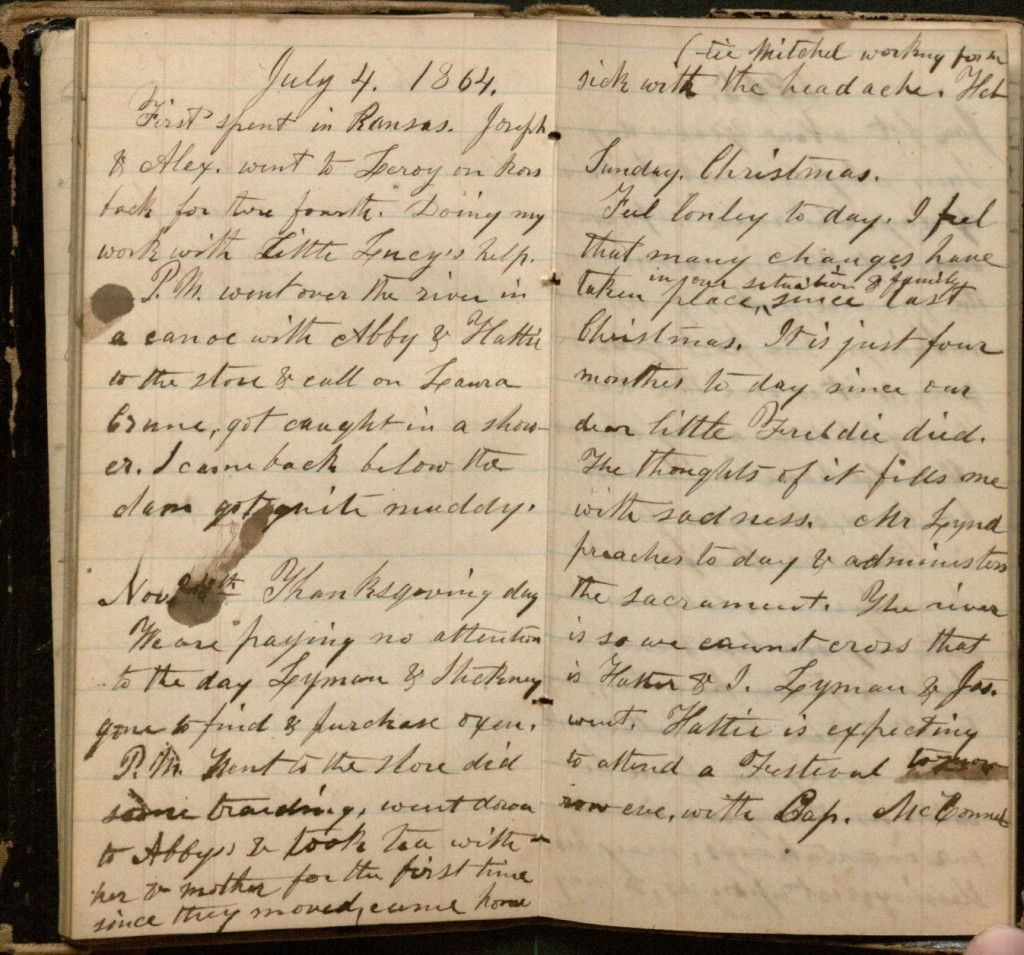
Entries in Sarah Goss Clark’s diary, July-December 1864, Sarah Goss Clark Papers,
Call Number: RH MS 839. Click image to enlarge.
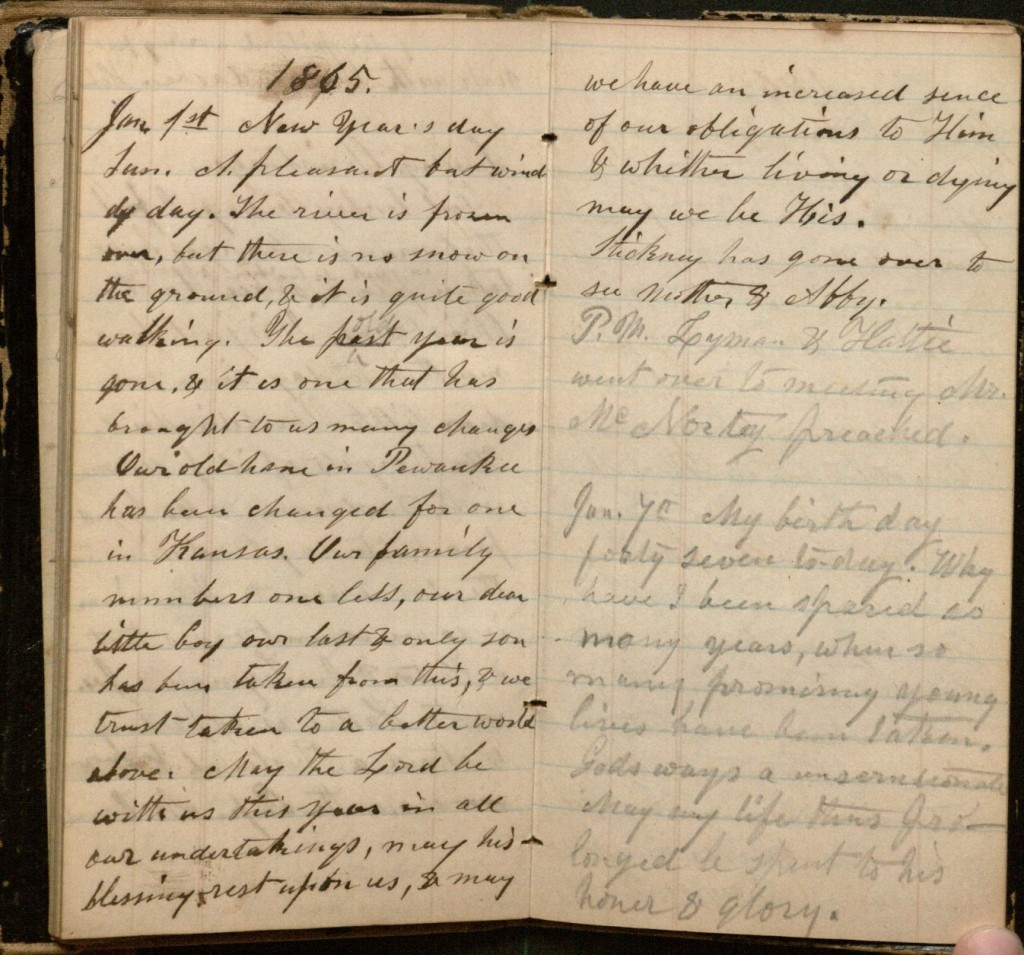
Entries in Sarah Goss Clark’s diary, January 1865, Sarah Goss Clark Papers,
Call Number: RH MS 839. Click image to enlarge.
July 4. 1864. First spent in Kansas. Joseph & Alex. went to Leroy on horsback for the fourth. Doing my work with Little Lucy’s help.
Nov.24th Thanksgiving day. We are paying no attention to the day Lyman & Stickney [her husband and brother] gone to find and purchase some oxen.
Sunday. Christmas. Feel lonley today. I feel that many changes have taken place in our situation & family since last Christmas. It is just four monthes to day since our dear little Freddie died. The thoughts of it fills me with sadness.
Jan. 7th my birthday forty seven to-day. Why have I been spared so many years, when so many promising young lives have been taken.
When we read these women’s original letters to their “Dear Mothers” and the diary entries they wrote, we can feel their joys and sorrows and gain a deeper understanding of the everyday challenges faced by Kansas’ earliest settlers.
Tina Nolan Shepperd
Student Technician, Conservation Services


